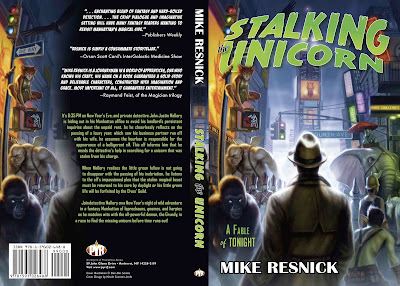 John Picacio guests on Stargate: Atlantis executive producer Joseph Mallozzi’s blog. John answers questions from Mallozzi’s readers – all his comments are well worth checking out.
John Picacio guests on Stargate: Atlantis executive producer Joseph Mallozzi’s blog. John answers questions from Mallozzi’s readers – all his comments are well worth checking out.
Meanwhile, here’s a taste: “There’s another shift that happened around the early-90’s, right around the time when Chip Kidd and the Knopf design staff was making a big splash with their Random House covers. I think an unfair stigma was placed on illustration as being an element that ‘limited’ a book to a genre audience, and publishers therefore relied more and more on stock photography and in-house designers to create covers. In the process, they lost sight of the full potential of original drawings and paintings to sell product in the marketplace. Kidd’s a smart designer, but I often wonder if he perhaps helped spread that stigma in interviews because it glorified designers like him, at the expense of illustration. The fact is, publishing still thinks this way today and I think it’s a self-fulfilling prophecy that stunts the growth of ideas, profit, and outreach. Somewhere along the way there, publishers generated this self-fulfilling prophecy that illustration limited audiences. Perhaps it’s just a nice story that helps them cut costs and save in-house jobs? The fact is, there are dozens of examples of illustrators who didn’t limit audiences, but instead transcended time and context, and expanded audience and profit. The list is long and diverse – try J.C. Leyendecker in the 1910’s, Norman Rockwell in the 1940’s, the aforementioned Powers in the 1950’s, and Dave McKean in the 1990’s, to name only a few off the top of my head. We’re talking about revolutionary cover artists of their time with huge critical and commercial impact that exploded the growth of their publications beyond the existing audience. So if it’s possible in those eras, why say that today’s mainstream audiences aren’t sophisticated enough to embrace progressive, original illustration?”
by Tom Lloyd. With quotes from Yours Truly and a LOT of commentary from Lockwood himself, and 20 different sketches, roughs and detailed close-ups, the post is well worth checking out.










